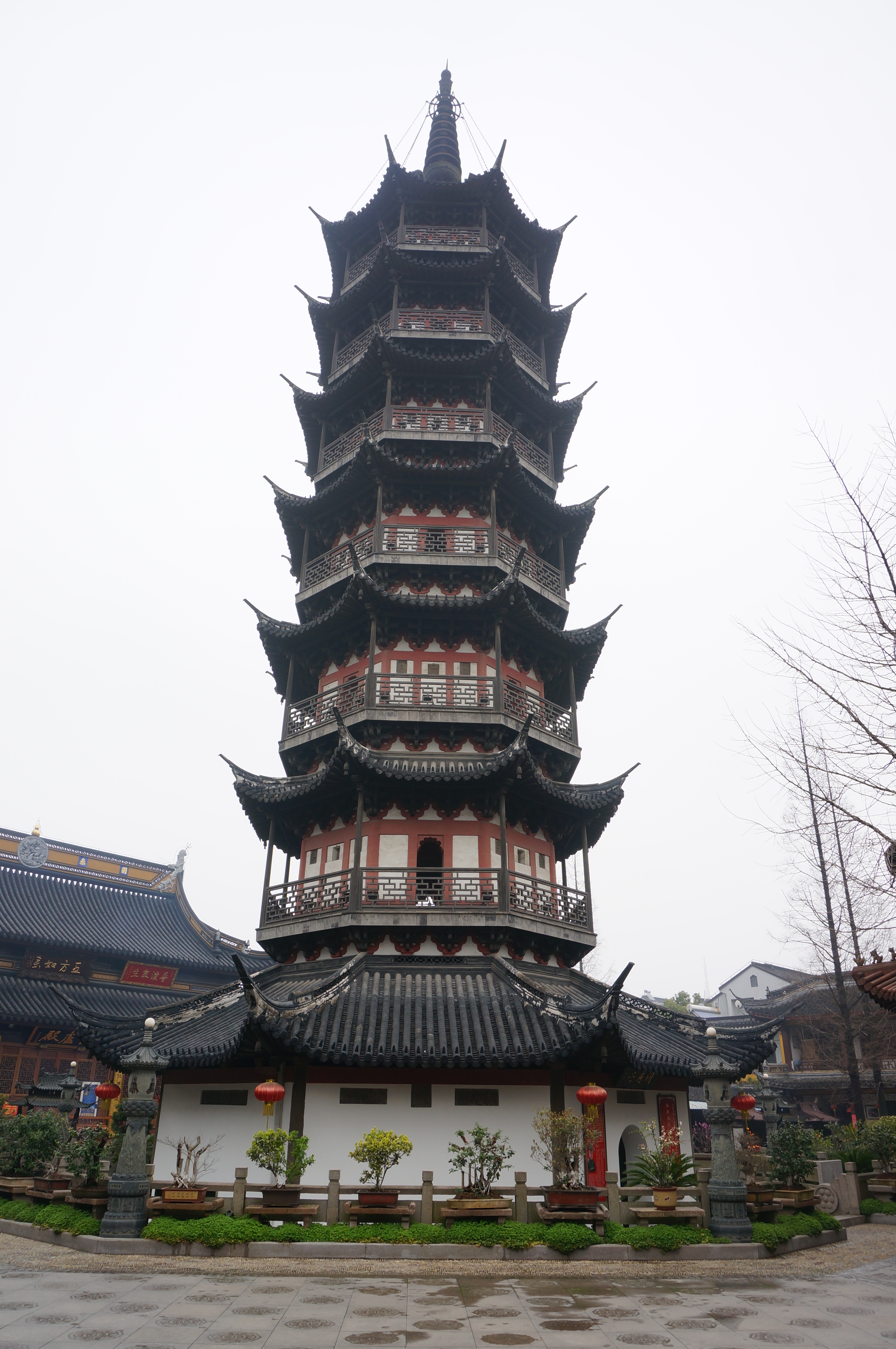Xilin Chan Temple on:
[Wikipedia]
[Google]
[Amazon]
 Xilin Chan Temple () is a
Xilin Chan Temple () is a
Buddhist temple
A Buddhist temple or Buddhist monastery is the place of worship for Buddhists, the followers of Buddhism. They include the structures called vihara, chaitya, stupa, wat and pagoda in different regions and languages. Temples in Buddhism represen ...
located in Yueyang Subdistrict, Songjiang District of Shanghai
Shanghai (; , , Standard Mandarin pronunciation: ) is one of the four direct-administered municipalities of the People's Republic of China (PRC). The city is located on the southern estuary of the Yangtze River, with the Huangpu River flow ...
. The modern temple was built between 1986 and 2003.
History
The temple traces its origins to the former "Xilin Vihara" (), founded by Hu Zengchu () in 872, in the ruling of Yizong Emperor of theTang dynasty
The Tang dynasty (, ; zh, t= ), or Tang Empire, was an Dynasties in Chinese history, imperial dynasty of China that ruled from 618 to 907 AD, with an Zhou dynasty (690–705), interregnum between 690 and 705. It was preceded by the Sui dyn ...
(618–907). Originally known as "Jiedai Temple" () in the Southern Song dynasty
The Song dynasty (; ; 960–1279) was an imperial dynasty of China that began in 960 and lasted until 1279. The dynasty was founded by Emperor Taizu of Song following his usurpation of the throne of the Later Zhou. The Song conquered the rest ...
(1127–1279), and later renamed "Ting'en Temple" () and "Chong'en Temple" (), Yingzong Emperor of Ming dynasty
The Ming dynasty (), officially the Great Ming, was an Dynasties in Chinese history, imperial dynasty of China, ruling from 1368 to 1644 following the collapse of the Mongol Empire, Mongol-led Yuan dynasty. The Ming dynasty was the last ort ...
(1368–1644) inscribed and honored the name "Xilin Chan Temple of Great Ming" in the mid-15th century. The temple was destroyed by fire during the Mongolian invasion
Mongolian may refer to:
* Something of, from, or related to Mongolia, a country in Asia
* Mongolian people, or Mongols
* Mongolia (1911–24), the government of Mongolia, 1911–1919 and 1921–1924
* Mongolian language
* Mongolian alphabet
* Mong ...
of the 13th century, and was restored and reconstructed in 1387, at the dawn of Ming dynasty.
The temple became dilapidated for neglect during the Republic of China (1912–1949)
The Republic of China (ROC), between 1912 and 1949, was a sovereign state recognised as the official designation of China when it was based on Mainland China, prior to the Retreat of the government of the Republic of China to Taiwan, relocat ...
. It was devastated by the Red Guards during the ten-year Cultural Revolution
The Cultural Revolution, formally known as the Great Proletarian Cultural Revolution, was a sociopolitical movement in the People's Republic of China (PRC) launched by Mao Zedong in 1966, and lasting until his death in 1976. Its stated goal ...
. After the 3rd Plenary Session of the 11th Central Committee of the Communist Party of China
The 3rd Plenary Session of the 11th Central Committee of the Chinese Communist Party was a pivotal meeting of the Central Committee of the Chinese Communist Party held in Beijing, China, from December 18 to December 22, 1978.
The conference ma ...
, according to the national policy of free religious belief, Xilin Chan Temple was officially reopened to the public. In 1992, abbot Shi Xingxiu () supervised the reconstruction of Kunlu Hall and Mahavira Hall
A Mahavira Hall, usually simply known as a Main Hall, is the main hall or building in a traditional Chinese Buddhist temple, enshrining representations of Gautama Buddha and various other buddhas and bodhisattvas. It is encountered throughout ...
.
Architecture
Along the central axis of the temple stand four buildings including the Shanmen,Mahavira Hall
A Mahavira Hall, usually simply known as a Main Hall, is the main hall or building in a traditional Chinese Buddhist temple, enshrining representations of Gautama Buddha and various other buddhas and bodhisattvas. It is encountered throughout ...
, Yuanying Pagoda () and Kunlu Hall (), which were completed between 1986 and 2003.
Yuanying Pagoda
Octahedral in shape, it has seven stories with the height of . It is made of brick and stone. TheSong dynasty
The Song dynasty (; ; 960–1279) was an imperial dynasty of China that began in 960 and lasted until 1279. The dynasty was founded by Emperor Taizu of Song following his usurpation of the throne of the Later Zhou. The Song conquered the rest ...
(960–1279) Chinese pagoda was built in memory of Chan master Yuanying ().
Gallery
References
{{DEFAULTSORT:Xilin Chan Temple Buddhist temples in Shanghai Buildings and structures in Shanghai Tourist attractions in Shanghai 20th-century establishments in China 20th-century Buddhist temples Religious buildings and structures completed in 2003